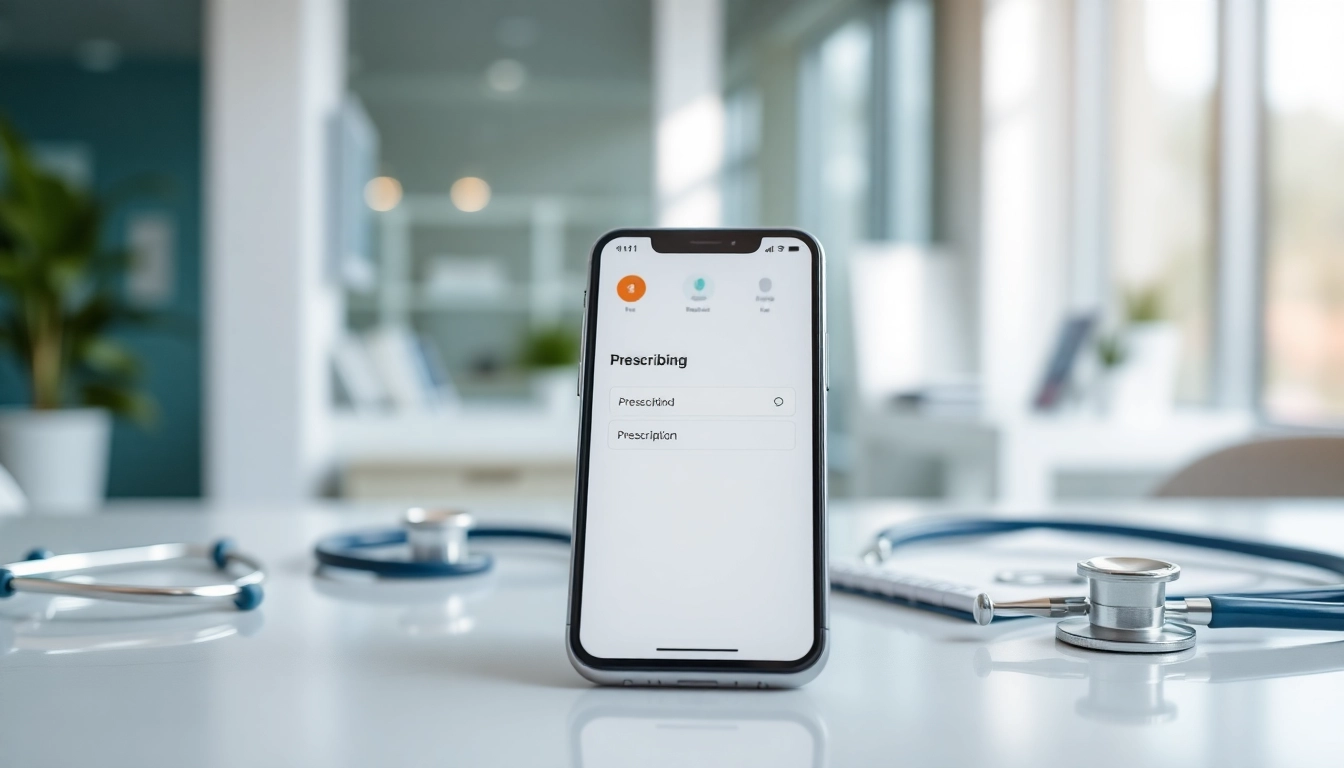Introduction to Apps for Electronic Prescriptions
In recent years, the healthcare industry has witnessed a significant transformation driven by technological advancements, particularly in pharmaceuticals. One of the most impactful developments is the rise of apps for electronic prescriptions. These applications facilitate the process of prescribing medication, making it more efficient, safe, and streamlined for healthcare providers and patients alike.
What are Electronic Prescriptions?
Electronic prescriptions, commonly referred to as e-prescriptions, are digital versions of the traditional paper scripts that healthcare providers issue to patients. Through e-prescribing systems, providers can send prescriptions directly to a patient’s chosen pharmacy electronically. This method not only enhances the speed of the prescription process but also reduces the risks associated with handwritten prescriptions, such as transcription errors.
Importance of Digital Solutions in Healthcare
The integration of digital solutions into healthcare workflows has been pivotal for improving overall efficiency and patient outcomes. E-prescriptions represent a critical component of this digital landscape, primarily because they foster better communication among healthcare providers, patients, and pharmacies. In a time when patient safety and service efficiency are paramount, leveraging technology for prescription management helps mitigate the risk of medication errors and ensures compliance with healthcare regulations.
Overview of Key Features in E-Prescribing Apps
When selecting an app for electronic prescriptions, it is essential to understand the key features that can significantly impact usability and effectiveness. Some common features include:
- User-friendly interface: A straightforward layout that allows healthcare providers to navigate the app easily.
- Patient medication history: Access to a patient’s prescription history helps in making informed decisions regarding new prescriptions.
- Interoperability: The capability to integrate with various healthcare systems, including electronic health records (EHR).
- Compliance tracking: Tools that ensure adherence to governmental regulations regarding prescription management.
Benefits of Using Apps for Electronic Prescriptions
The benefits of utilizing electronic prescriptions extend beyond mere convenience. They encompass various aspects crucial for both healthcare providers and patients.
Streamlining Workflow for Healthcare Providers
One of the most significant advantages of e-prescribing apps is the ability to streamline workflows within healthcare settings. By automating the prescription process, providers can save time that would otherwise be spent on phone calls and paperwork. This increased efficiency allows healthcare professionals to focus more time on patient interaction and care rather than administrative tasks.
Improving Patient Safety and Medication Adherence
Patient safety is paramount in healthcare, and electronic prescriptions play a key role in enhancing it. By eliminating illegible handwriting and reducing the chances of transcription errors, e-prescribing minimizes the potential for medication mishaps. Moreover, e-prescribing applications often come equipped with features that proactively alert providers about potential drug interactions, allergies, or contraindications, thereby promoting safer prescribing practices.
Reducing Errors in Prescription Management
Mistakes in prescription management can have serious consequences for patients. E-prescribing apps significantly reduce human error by providing clear, accurate, and consistent prescription details. Additionally, automated systems help ensure that prescriptions are filled accurately at pharmacies, further decreasing the risk of errors that could arise from manual processes.
Key Features to Look for in Electronic Prescription Apps
Choosing the right app for electronic prescriptions is crucial for maximizing the benefits of e-prescribing. Here are some essential features to consider:
User-Friendly Interfaces and Accessibility
A well-designed user interface is fundamental for any application, especially in fast-paced healthcare environments. The app should offer an intuitive design that promotes ease of use, enabling providers to navigate the platform seamlessly. Accessibility options, like supporting touchscreen devices and displaying content in larger fonts, are essential for accommodating all users.
Security and Compliance Considerations
As e-prescribing deals directly with sensitive patient information, security measures must be robust. Look for apps that comply with healthcare regulations like HIPAA and utilize encryption for data protection. It’s crucial for healthcare providers to ensure that patient data is kept confidential and secure against breaches or unauthorized access.
Integration with Electronic Health Records (EHR)
Seamless integration with existing electronic health record systems is a feature that enhances the functionality of e-prescribing apps. The ability to access a patient’s medical history, allergies, and previous prescriptions directly from the app facilitates informed decision-making. It also reduces redundancies in data entry, which can enhance overall patient care.
Comparison of Popular Apps for Electronic Prescriptions
With the market full of various e-prescribing solutions, it becomes essential to evaluate and compare apps based on multiple criteria.
Evaluating Pricing and Subscription Models
When choosing an e-prescribing app, it is important to assess the pricing structure and subscription models. Some applications offer free versions with limited features, while others require a monthly or annual subscription for full access to all functionalities. Understanding the costs involved and the return on investment can inform not only the choice of the app but also its long-term financial impact on a practice.
Feature Set Comparison Among Leading Apps
Examining the specific features that various apps offer can help healthcare providers choose solutions that align with their needs. For instance, some apps may excel in providing comprehensive medication databases, while others may prioritize usability and customer support. Creating a feature matrix can be an effective way to objectively compare your options.
User Feedback and Ratings Analysis
User feedback is a valuable resource for assessing the practicality and effectiveness of an e-prescribing app. By looking at app ratings and reviews, prospective users can gain insights into the real-world experiences of their peers. High ratings and positive testimonials can indicate a reliable and efficient solution, while pervasive complaints may serve as red flags.
Implementation and Best Practices for Adoption
Successful adoption of an e-prescribing application involves careful planning and execution. Here are some steps and best practices to consider:
Steps for Successful Integration into Practice
Integrating an e-prescribing app into existing workflows requires a structured approach. Key steps include:
- Assessment of Needs: Identify specific needs and gaps within the current prescribing process.
- Selection of the Right App: Based on evaluations, select the app that best meets your practice’s needs.
- Data Migration: Ensure a smooth transition by migrating existing data into the new system securely.
- Configuration and Customization: Adjust the app settings to align with your workflow and preferences.
Training Staff and Ensuring Compliance
Comprehensive training is essential for successful adoption. Ensure that all staff members are comfortable using the new app by providing thorough training sessions. Additionally, maintain regular check-ins and updates to keep everyone aligned with compliance requirements and best practices. Encouraging feedback during and after training can help identify areas for improvement and reinforce learning.
Measuring the Impact on Practice Efficiency
After implementation, it is crucial to assess the app’s impact on the overall efficiency of your practice. Set measurable goals and KPIs to evaluate performance against these benchmarks. Such metrics might include the average time per prescription, error rates, patient satisfaction scores, and overall productivity. Regular analysis of these metrics will highlight areas for improvement and can justify the ongoing investment into the e-prescribing solution.



